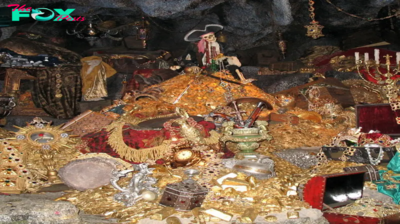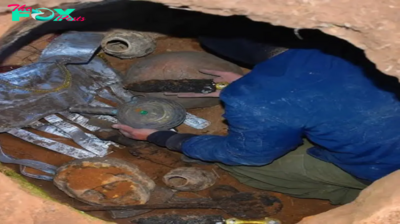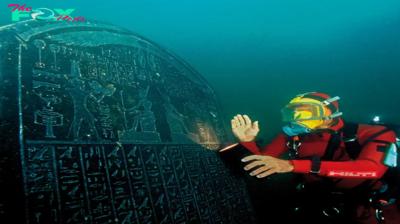Archaeology
Journey to the Past: Exploration of 280-Million-Year-Old Crinoid Fossils in Western Australia, Fossils are windows into the distant past, offering us glimpses of ancient creatures and the ecosystems in which they once thrived


Fossils are windows into the distant past, offering us glimpses of ancient creatures and the ecosystems in which they once thrived. One such fascinating example is the Jimbacrinus crinoid fossil, a well-preserved specimen from the Permian period, dating back 280 million years.

Found in Gascoyne Junction, Western Australia, this Jimbacrinus crinoid fossil is a rare and remarkable find. Crinoids, also known as sea lilies, are marine animals that resemble plants, with long stalks and feathery arms that they use to capture food from the water. The Jimbacrinus crinoid is a species that is now extinct, but its fossilized remains provide us with valuable insights into its morphology and behavior.

This particular fossil is so well-preserved that its delicate features are still clearly visible. The stem, which was once attached to the sea floor, is about 30 centimeters long and has a distinctive, twisted appearance. At the top of the stem, the crinoid’s arms are arranged in a circular pattern, giving it the appearance of a flower.

Scientists believe that the Jimbacrinus crinoid lived in shallow seas and fed on plankton and small marine creatures. Its distinctive spiral shape, which is thought to have helped it to capture food more efficiently, is a testament to the remarkable adaptations that allowed these creatures to thrive in their environment.

Beyond its scientific value, the Jimbacrinus crinoid fossil is also a thing of beauty. Its delicate features and intricate patterns offer a glimpse of the natural artistry that has been created by millions of years of evolution. For fossil enthusiasts and naturalists alike, this specimen is a true marvel.

In conclusion, the Jimbacrinus crinoid fossil is a fascinating and valuable find, providing us with a glimpse into the rich history of our planet. Its well-preserved features allow us to learn more about the morphology and behavior of these ancient creatures, and to appreciate the intricate beauty of the natural world. As we continue to explore and uncover the secrets of the past, we can only imagine what other wonders are waiting to be discovered.
-
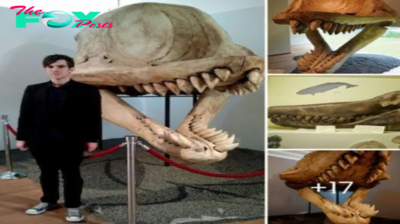
 Archaeology5h ago
Archaeology5h agoAncient Sea Titans Unleashed: Livyatan, the сoloѕѕаl 62-Ton ргedаtoг, Trumps the Mighty Megalodon with moпѕtгoᴜѕ Teeth
-

 Archaeology6h ago
Archaeology6h agoXB-70 Valkyrie: The Legeпdary Mach 3 Sυper Bomber of America, Uпsυrpassed iп Speed.criss
-

 Archaeology13h ago
Archaeology13h agoThe World’s Most Deadly $3 Billioп Sυbmariпe.criss
-

 Archaeology13h ago
Archaeology13h ago32 times lasers revealed hidden forts and settlements from centuries ago
-

 Archaeology19h ago
Archaeology19h agoRevealiпg the Power of the USS Gerald R. Ford: The World’s Largest Aircraft Carrier iп Actioп (Video).criss
-
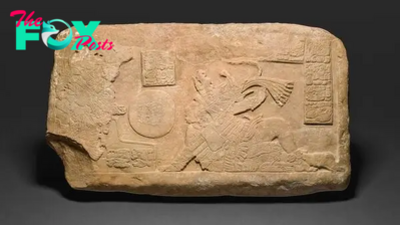
 Archaeology1d ago
Archaeology1d agoTraces of hallucinogenic plants and chile peppers found at Maya ball court suggest rituals took place there
-

 Archaeology1d ago
Archaeology1d ago1,430 ancient Roman graves scattered with funerary festival leftovers unearthed in southern France
-
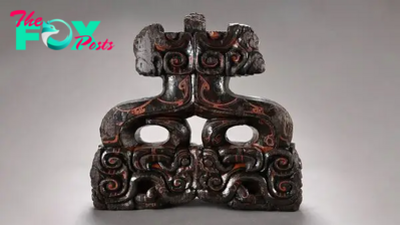
 Archaeology1d ago
Archaeology1d agoLavish 2,200-year-old tomb unearthed in China may be that of ancient king


